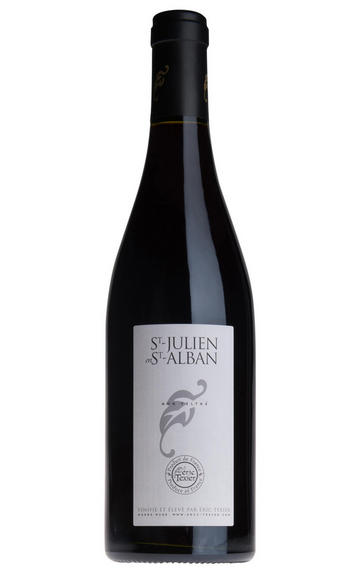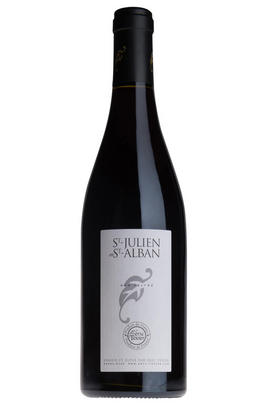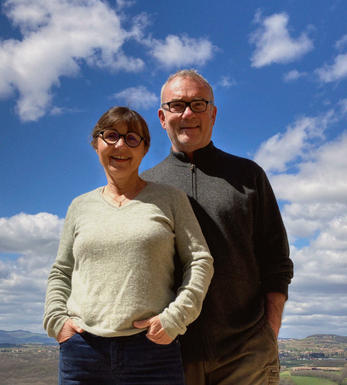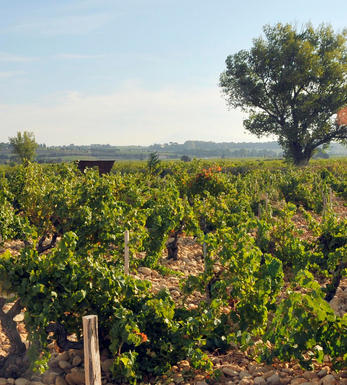
2013 Côtes du Rhône, St Julien en St Alban, Vieille Serine, Eric Texier

About this WINE

Eric Texier
Eric Texier made the unprecedented leap from nuclear engineer to winemaker in the early 1990s. Although his passion for wine was begat from the wines of Burgundy, he was inspired by an older generation of Rhône producers like Marius Gentaz and Pouchoulin, and felt that a successor was needed. Drawing on their methods of only using natural yeasts and leaving the bunches intact, he developed some of his own ideas and techniques as well. The grapes are grown organically (although the labels don’t state this). Maturation is carried out in old demi-muids and sulphur dioxide is never used during vinification, only at bottling. All of these methods, he feels, serve to express the special terroir of these appellations.
And what of the terroirs? Brézème is a tale of two soils, divided by a valley. One, which Eric refers to as the “vrai Côte de Brézème” and likens to Hermitage, is made up of marnes calcaires while the other is more alluvial with galets ronds. There is a unique microclimate here, 300 metres above sea-level with a cooling influence from the Vercors Massif to the east. Some vineyards are classified as Brézème and others not in a seemingly haphazard fashion; the only element that Eric can find in common for the classified vineyards is that they are easier to work. Texier’s wines come from 4.2ha here, producing approximately 20,000 bottles (slightly more than St Julien, of which there were 16,000 bottles produced in 2010). St Julien is, curiously, much hotter than Brézème though it is just across the Rhône and 200 metres higher. Eric’s Syrah and Roussanne vines are the original local varieties and not clones, which is why the old-vine red and white cuvées are called “Serine” and “Roussette” respectively.
He is the only organic producer both in Brézème and St Julien, and could be seen as a pioneer of both appellations which, while today being just humble Côtes du Rhône, are expected very shortly to have their own appellations.

Côtes du Rhône
Côtes du Rhône, located in southern France’s Rhône Valley, is one of the country’s largest and most well-known wine appellations. The region is renowned for producing a wide range of high-quality wines, with vineyards extending from just south of Lyon in the north to Avignon in the south, covering both banks of the Rhône River.
Côtes du Rhône is celebrated for its wide array of red and white grape varieties. The primary red grape varieties include Grenache, Syrah, Mourvèdre, and Cinsault, while the main white grape varieties consist of Viognier, Marsanne, and Roussanne.
The region is divided into several appellations, each with distinct characteristics and regulations. The hierarchy ranges from the broad Côtes du Rhône appellation to more specific and prestigious sub-appellations like Côtes du Rhône Villages and Crus such as Châteauneuf-du-Pape, Gigondas, and Hermitage.
The region benefits from a diverse terroir, contributing to the different wine styles. The northern part has a continental climate, while the southern portion enjoys a Mediterranean climate, which plays a vital role in grape ripening and flavour development.
The red wines are highly regarded for their rich and robust flavours. They often exhibit notes of dark fruits, herbs, spices, and distinctive peppery quality, especially in the Syrah-dominated wines from the northern Rhône.
The white wines are typically aromatic and elegant, with flavours of stone fruits, floral notes, and hints of mineral complexity.
Côtes du Rhône also produces excellent rosé wines, which are refreshing and perfect for warm weather enjoyment.
Winemaking in Côtes du Rhône has a long history from ancient times. The region preserves a combination of traditional methods and modern techniques, allowing winemakers to express the unique characteristics of their terroir.
Côtes du Rhône wines are versatile and pair well with a wide range of dishes, including roasted meats, hearty stews, grilled vegetables, and cheeses.

Syrah/Shiraz
A noble black grape variety grown particularly in the Northern Rhône where it produces the great red wines of Hermitage, Cote Rôtie and Cornas, and in Australia where it produces wines of startling depth and intensity. Reasonably low yields are a crucial factor for quality as is picking at optimum ripeness. Its heartland, Hermitage and Côte Rôtie, consists of 270 hectares of steeply terraced vineyards producing wines that brim with pepper, spices, tar and black treacle when young. After 5-10 years they become smooth and velvety with pronounced fruit characteristics of damsons, raspberries, blackcurrants and loganberries.
It is now grown extensively in the Southern Rhône where it is blended with Grenache and Mourvèdre to produce the great red wines of Châteauneuf du Pape and Gigondas amongst others. Its spiritual home in Australia is the Barossa Valley, where there are plantings dating as far back as 1860. Australian Shiraz tends to be sweeter than its Northern Rhône counterpart and the best examples are redolent of new leather, dark chocolate, liquorice, and prunes and display a blackcurrant lusciousness.
South African producers such as Eben Sadie are now producing world- class Shiraz wines that represent astonishing value for money.


Buying options
Add to wishlist
Description
Still in the Ardèche, this is from old 70-year-old Serine, a venerable Syrah clone, grown on gneiss, with no sulphur dioxide added at all. The 2013 has impressive mineral-tinged black cherry fruit backed up by peppery notes. The palate is meaty and lively with raspberry and cherry fruit. Overall the impression is one of structure, Corinthian rather than Doric, and purity of intent.
Simon Field MW - Rhône Buyer
The wines of Domaine de Pergaud are very well known to the cognoscenti of the Rhône Valley, perhaps best known under the name of their charismatic progenitor. Eric Texier, a nuclear engineer, decided to devote himself to reinvigorating the wines of the appellation Brézème, on the east side of the Rhône River, 30 kilometres south of Hermitage, with which it once shared an illustrious reputation and, it seems, a similar granitic soil structure. If this was not sufficiently difficult, he also took on some vines on the other side— of the river in the Ardèche département the AOP of St Julien en St Alban. Farming organically and making wines in the natural way, adding only a little sulphur at bottling, his has been not only to reawaken old appellations (one thinks of Seyssuel) but also to make wines in a more ‘traditional’ style, that is to say lighter and more elegant. He appears to have succeeded in both these aspirations.
wine at a glance
Delivery and quality guarantee